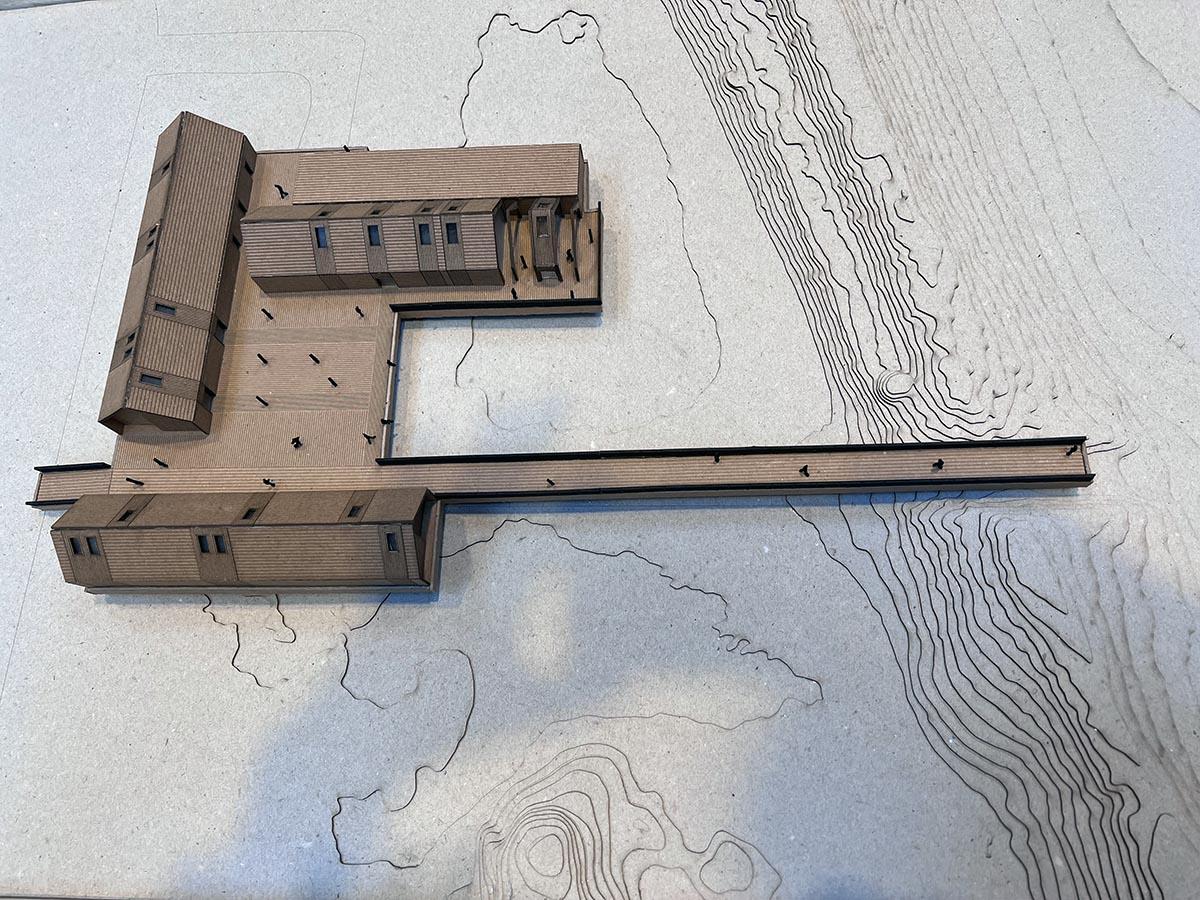Design concepts for a Maryland coastal gem offer a compelling case study for leveraging a site’s natural resources to lighten the human ecological footprint. Fourteen design proposals for a new 9,000-square-foot public facility for Assateague State Park form the foundation of a new report, submitted this month to the Maryland Department of Natural Resources (MDNR), as part of an ongoing partnership to devise resilient design solutions for one of the state’s most popular and profitable parks.
Known for its wild ponies, diverse biosphere and dynamic, shifting landscape, the Atlantic barrier island of Assateague is a natural treasure at risk, shouldering an uptick of volatile storms and flooding as a result of climate change. With guidance from MDNR, 29 graduate students from the School of Architecture, Planning and Preservation worked with faculty and professional consultants to explore design concepts that struck an especially delicate balance between form dand function: The proposed building, which would replace a 90s-era public facility nearing the end of its useful life, must engage the park’s crush of yearly patrons—1.7 million annually—while preserving the island’s fragile ecology.
“As a barrier island, Assateague has been a constantly changing landscape since its formation 5,000 years ago,” said Clinical Professor Amy Gardner, part of the ARCH 600/611 studio teaching team. “But now the dynamic balance of sand, wind, weather and water is being upset by a complex new variable: climate change. The state of Maryland’s investment in this project can contribute in significant ways to the climate resilience of the park, and potentially act as a model for future development in vulnerable coastal areas.”
The realities of the site spurred the teaching team to push beyond the traditional design studio format by integrating energy modeling, materials investigation and bioclimatic design strategies into the students’ purview, arming them with the tools to develop feasible and sustainable design concepts.
“The qualitative, place-based thermal strategies that influenced students’ formal explorations throughout the design process arose from the shared vision of mutually beneficial relationships between people and the natural environment,” said Clinical Associate Professor and team coordinator Julie Gabrielli.
Each of the resulting proposals offers something different, but all deliver concepts that embrace holistic climate resilience at the site, building and material level, leveraging tactics such as adaptive reuse, earth-friendly materials and passive design strategies. Design interventions capture island sun, ocean breeze, and water to create sustainable creature comforts for the island’s throng of visitors—changing and gathering spaces, a camp shop, information and lifeguard facilities and food services.
In “Gale Gateway,” an undulating roof draws cool ocean air throughout indoor spaces. “Habitat” features exterior walls, constructed with salvaged materials, to form nesting boxes for threatened species while insulating and protecting the interior. A tensile canopy, reminiscent of a sailing ship, infuses natural light throughout flexible spaces in “Breezeway."
“Our mission is to maintain as many amenities and resources in the park for as long as we can,” said Park Manager Angela Baldwin, who has worked on Assateague for 22 years. “We knew from past projects that working with the students would be an opportunity for some great ideas and concepts, components that can help the area be more resilient but also be more green. Those were really exciting to see.”
The full project scope, beautifully captured in the studio report, joins another comprehensive report outlining resilience strategies and a reconceived ranger station, the result of a 2021 summer architecture studio. Both studios were in conjunction with UMD’s Partnership for Action Learning in Sustainability (PALS) program.


